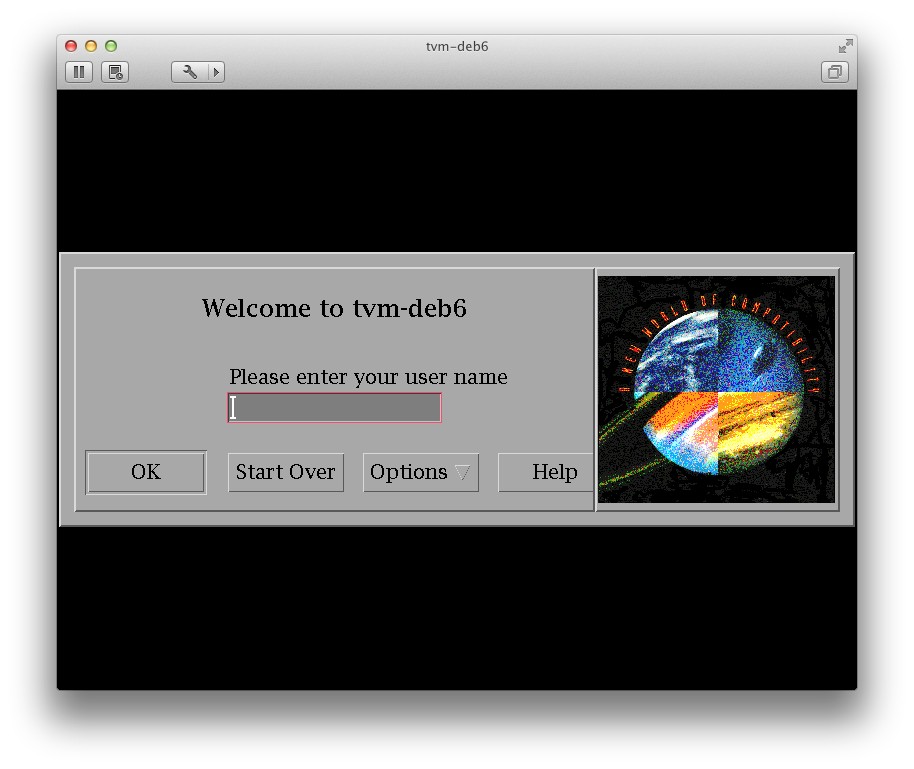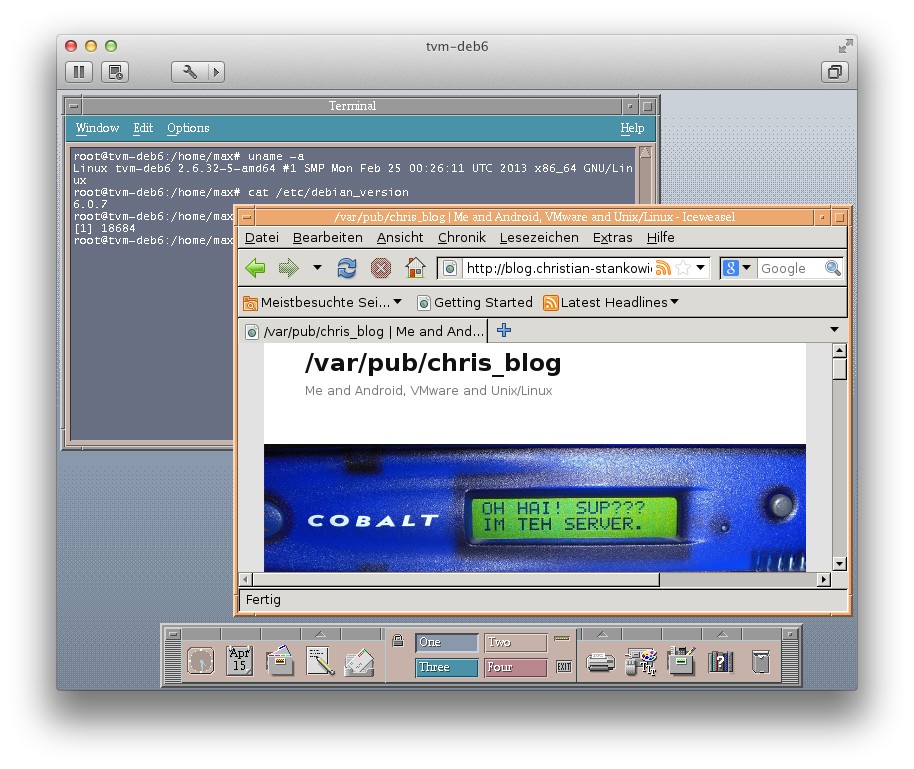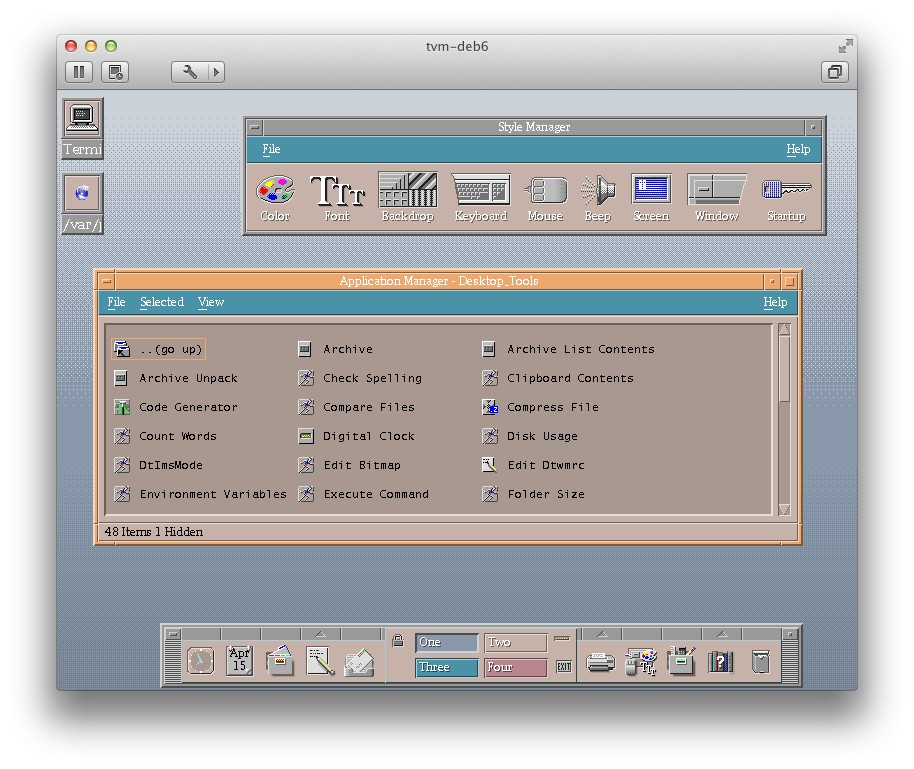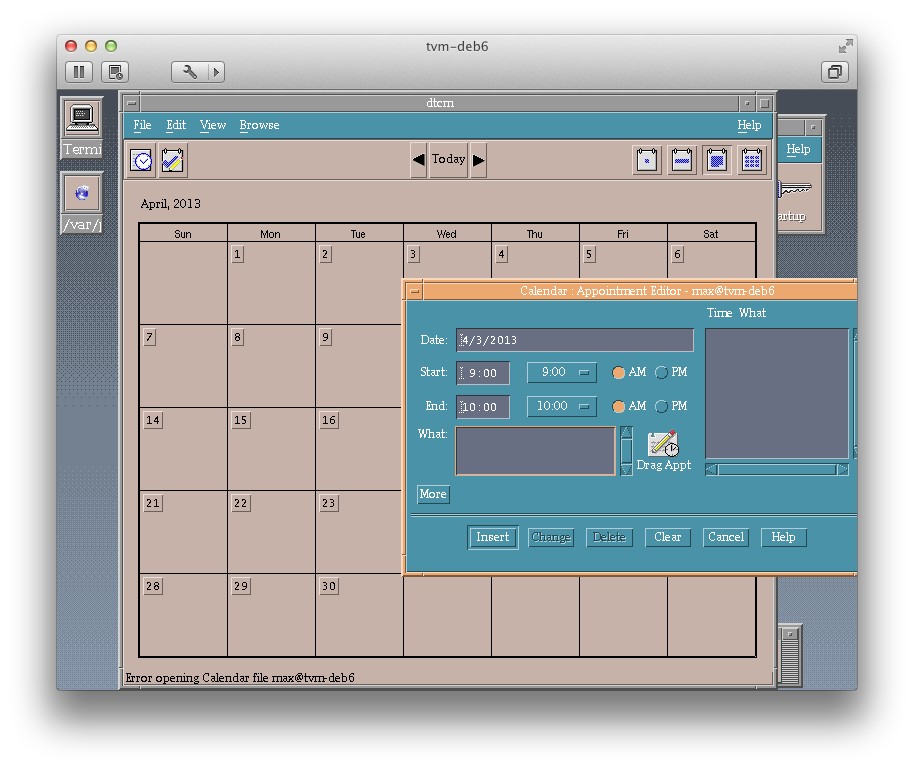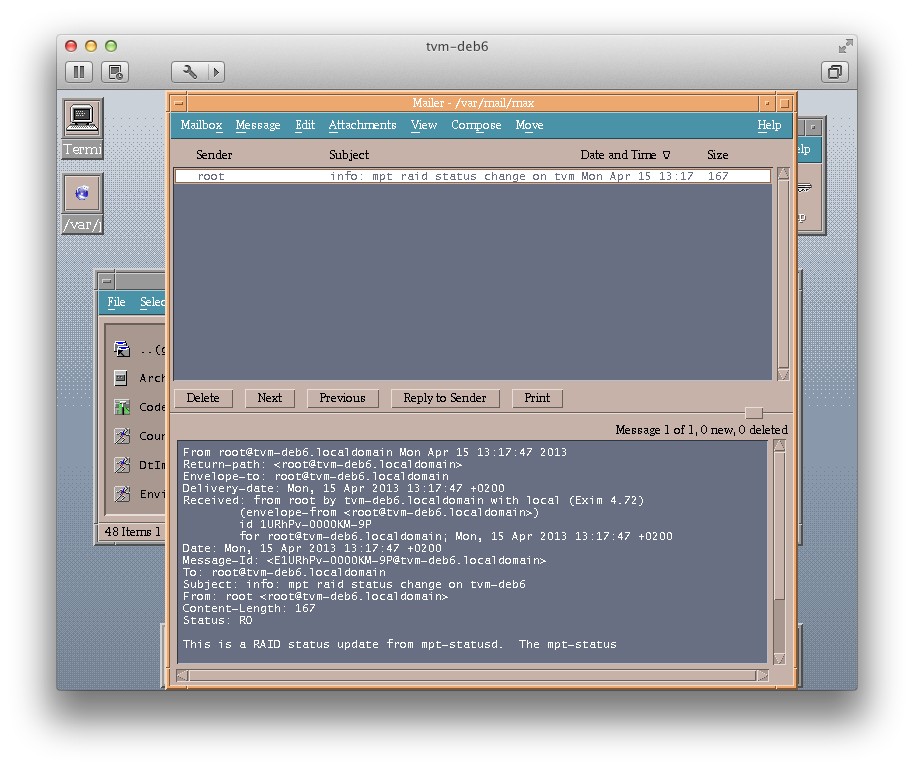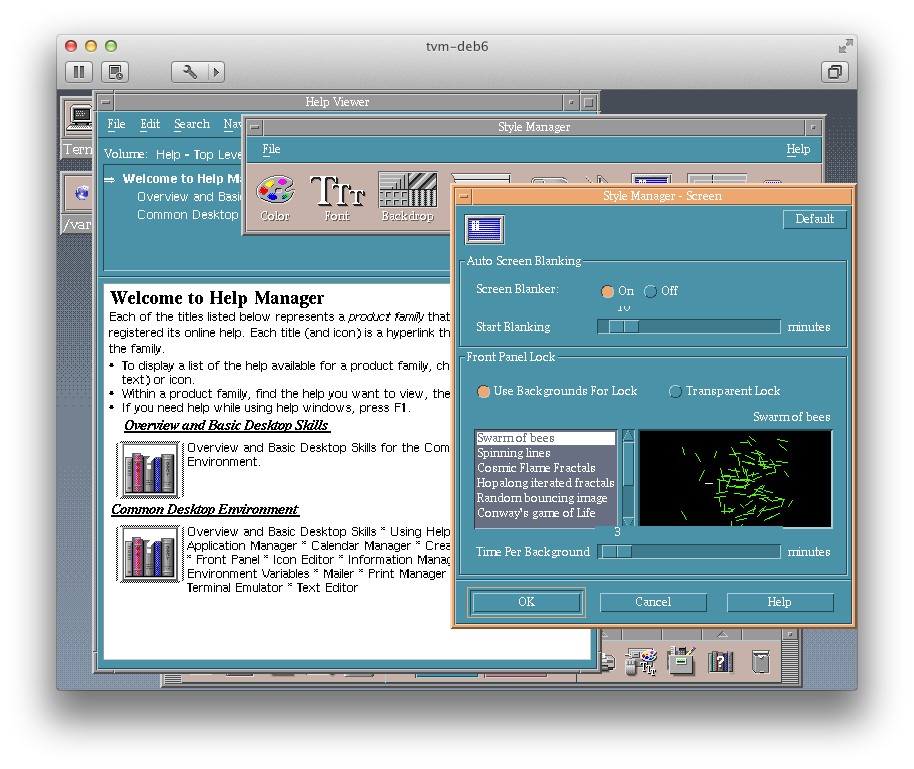CDE under Debian Squeeze
Many administrators or IT enthusiasts still might know Common Desktop Environment (CDE) from old UNIX days. Introduced in 1993, it was Unix's standard desktop for HP-UX, IBM AIX, Sun Solaris and Tru64 for more than 10 years. Even if Solaris dropped its CDE support 3 years ago, the old desktop is still used in HP-UX, AIX and OpenVMS.
A petition for publishing CDE's source code was started in 2006. After 6 years, the desired source code was published in september 2012. Currently, there's an alpha version which can be compiled under Linux.
Debian Squeeze is mentioned in the list of currently supported Linux distros - it's time to have a look at it, isn't it? 😉
Preparation
If not installed yet, you'll have to install HAL, DBUS and the X-server core components:
1# apt-get install xserver-xorg-core xinit dbus hal xserver-xorg-input-kbd xserver-xorg-input-mouse xserver-xorg-input-vmmouse
CDE requires additional development tools and libraries - they have to be installed, too:
1# apt-get install git libxp-dev libxt-dev libxmu-dev libxft-dev libxaw7-dev libx11-dev libjpeg-dev libjpeg62-dev libfreetype6-dev lesstif2 x11-xserver-utils ksh m4 ncompress xfonts-100dpi* rpcbind bison xbitmaps libmotif* x11-xserver-utils tcl-dev lprng
Compiling
You can retrieve the source code using a GIT mirror or tar snapshot. Afterwards you'll have to link the X-server header files before compiling CDE. After compiling some installation and configuration scripts have to be executed before creating a spool directory for the calendar application of CDE:
You can find additional information in the official build instructions: [click me!]
1# w3m http://downloads.sourceforge.net/project/cdesktopenv/src/cde-src-2.2.0c-alpha.tar.gz
2# tar xfz cde-src-2.2.0c-alpha.tar.gz
3# cd cdesktopenv-code/cde
4# mkdir -p imports/x11/include
5# cd imports/x11/include
6# ln -s /usr/include/X11 .
7# cd cdesktopenv-code/cde
8# make World
9# admin/IntegTools/dbTools/installCDE -s /path-to-cdesktopenv-code/cde/
10# admin/IntegTools/post_install/linux/configRun -e
11# chmod -R a+rwx /var/dt
12# mkdir -p /usr/spool/calendar
Display manager
You can either use the Motif-based dtlogin display manager...
1# export PATH=$PATH:/usr/dt/bin
2# LANG=C /usr/dt/bin/dtlogin
...or configure another display manager like SLiM to start CDE:
1# apt-get install slim
2# vi /etc/slim.conf
3...
4#login_cmd exec /bin/bash -login /etc/X11/Xsession %session
5login_cmd exec /bin/bash -login /usr/dt/bin/startxsession.sh
6
7ESC ZZ
8
9# vi /usr/dt/bin/startxsession.sh
10#!/bin/sh
11export PATH=$PATH:/usr/dt/bin
12export LANG=C
13/usr/dt/bin/Xsession
14
15ESC ZZ
16
17# service slim start
Gallery
Attached some screenshots of the retro desktop:
